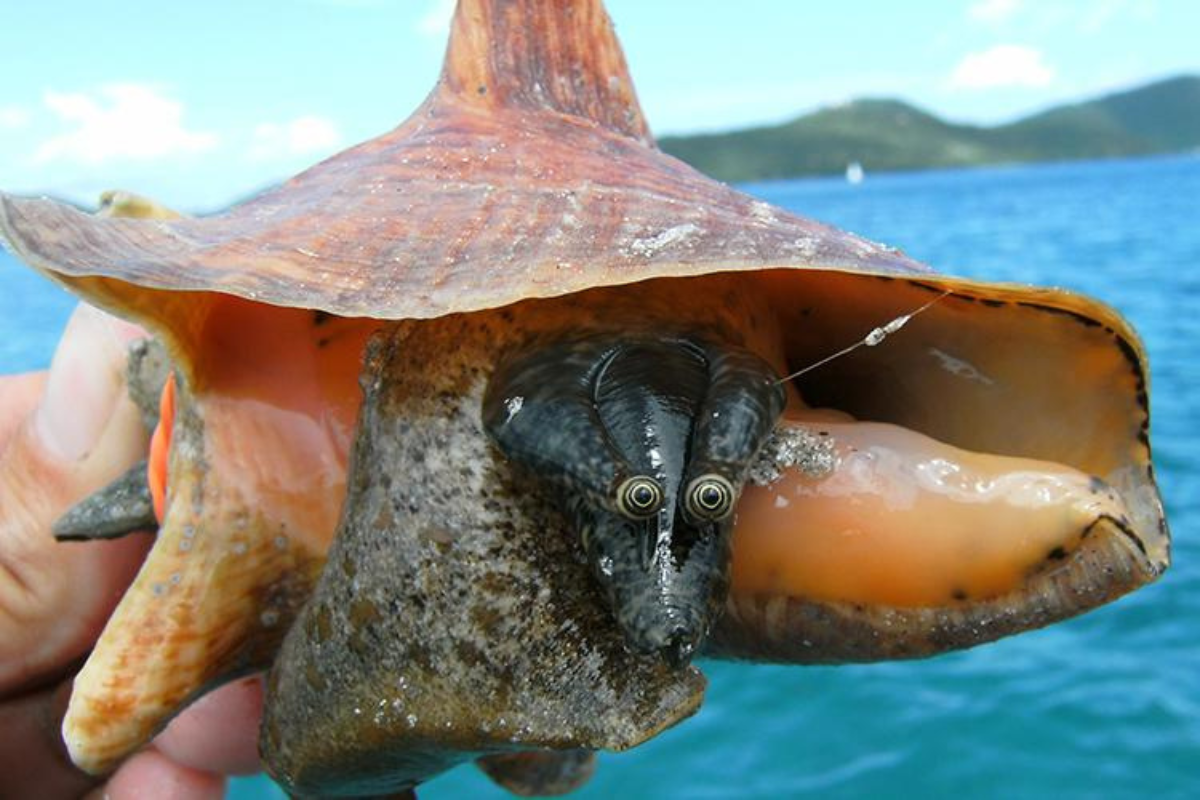Photo Credit: Jennifer Doerr, NOAA SEFSC Galveston
On Sept. 7, NOAA Fisheries announced a proposed rule to list the imperiled queen conch—a distinctive large mollusk known for its flared spiral shell with blunt spikes and pink interior—as threatened under the Endangered Species Act following Friends of Animals’ and WildEarth Guardians’ 2016 lawsuit.
“As more species are headed toward extinction, it is critical that people continue to fight for their protection, hold the government accountable for its duties under the Endangered Species Act and defeat efforts to chip away at the law. This is a perfect example of how Friends of Animals and WildEarth Guardians have done just that, and we hope that this will lead to lasting protection for the queen conch,” said Jennifer Best, director of FoA’s Wildlife Law Program.
The queen conch lives throughout the Caribbean Sea and Gulf of Mexico, from Bermuda and Florida in the northern extent of its range, to Brazil in the south. Conch are prized for their meat and their large, beautiful shells, and are commercially fished in approximately 30 countries. The U.S. is the largest importer of queen conch, importing approximately 78% of the queen conch meat in international trade (about 2,000 to 2,500 tons annually).
“If only Floridians and other people would admire the queen conch for its beauty and role in the ecosystem rather than for how it tastes as a fritter,” said Priscilla Feral, president of Friends of Animals. “It’s infuriating that people feel entitled to eat them to extinction.”
If the species is listed as threatened, the ESA’s import/export prohibition would not automatically apply. However, the ESA authorizes NOAA Fisheries to issue protective regulations it deems necessary and advisable for the conservation of threatened species. If NOAA Fisheries were to determine that import or export restrictions were necessary and advisable, those restrictions would be implemented with new regulations that would go through separate notice and comment to the public.
“ESA protections for the queen conch are long overdue, and we will continue to follow this process and advocate for the strictest regulations or uplisting them to endangered status,” Best said, explaining that if the species is listed as endangered, the ESA would prohibit importing queen conch into, or exporting it from, the United States.
WildEarth Guardians submitted a petition to list the conch on March 1, 2012. The National Marine Fisheries’ decision to not list the queen conch failed to recognize the continuing impacts of heavy human exploitation and the fact that 85 percent of conch populations may already be too small to successfully reproduce. WildEarth Guardians and Friends of Animals sued the NMFS in July 2016 over the agency’s refusal to protect the queen conch based on threats to the species from pollution, habitat degradation and human consumption.
A public comment period on NOAA’s proposed rule is open until Nov. 8, 2022. Any interested person can comment and provide additional information on the proposed rule. Prior to making a final determination, NOAA will consider public comments and new information that may not have been available when it conducted its status review for the queen conch.
To read the proposed rule or submit a comment, visit this site.

